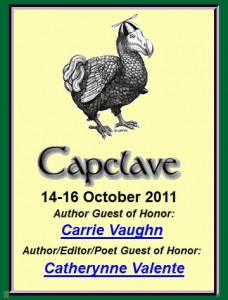What with one thing and another, it’s been a fairly rough few weeks recently, and the Year of Soup part of my blog has suffered as a result. That doesn’t mean I haven’t been making soup though, as a matter of fact I’ve made several…I just haven’t written them up.
Let’s see. Sunday before last I made a Roasted red pepper soup with chicken and corn. The other day I made a white bean and chicken chili on the spur of the moment, and a couple of times, including today, I made chicken noodle soup. Chicken soup, whether it’s a chowder, chili, noodle or (as s the case in tomorrow’s planned soup) barley, is a special kind of comfort food, and if lfe has thrown you a few curves lately, making chicken soup is a good response. Especially if you share it with friends.
Here’s the chicken noodle soup I made for lunch today for me and my gal in between running errands. Total prep time was probably about fifteen minutes. Then I left it on a low simmer for half an hour while we ran another errand and it was perfect when we got back.
Chicken Noodle Soup in a hurry
yield: four 10 oz servings
- 1 quart chicken stock
- 1 cup noodles (I used a mix of bowties and rotelle today, but often I like thin strands)
- 1 carrot – cut into quarters the long way and choped into one third inch slices)
- 2 stalks of celery (sliced the long way into thirds and cross sliced like the carrots)
- 1 baby bella mushroom, halved and sliced
- 1 skinned chicken thigh (diced)
- 1/4 tsp thyme
- 2 bay leaves
- 1/2 tsp flour (I use Wondra here because it’s desgned not to clump)
- Salt as needed
I put the stock into a saucepan and turned up the heat, then added each ingredeant as it got cut up. No saute, no special ceremony, just chop and add. The last things to go in were the spices and the flour, after which it all got stirred up to mix them in and the temperature lowered to a slow simmer. Then I covered it and walked away. Actualy, I drove, since we were taking my wagon in to have a noise looked at before I take it on a road trip next week.
When we got back from dropping off the car half an hour later, the place smelled great, which is where a lot of the psychological benefit of chicken soup comes from, thanks to some linkages between smell and the older parts of our brain, the ones that decide whether we should fight for our lives or put our feet up on a log and kick back.
We sat down and each had a bowl, leaving just enough for two bowl sized servings to be put up in the fidge. It was excellent and just what a dreary fall day after a hard weekd needed. I could have used white meat in the soup, but it wouldn’t have been as tender, so in general I really prefer using thighs over breast.
Can a good bowl of soup change the world? I wouldn’t bet against it, but I’m certain that it can make the world easier to take. Chicken soup for the soul doesn’t have to be a metaphor…the real thing does a fine job on its own.

 [/amazon_link]The other option you have is to buy a free standing phono amplifier and plug it into a turntable, making it compatible with contemporary recievers or computer sound cards. John had kept a perfectly good Dual turntable with the records, though he had no place to plug it in, so all I needed was the preamp. You can spend as much or as little as you want on that, from $12.95 to $300 or more. Me, I spent $12.95 to see how it worked, buying a “Bozak Madisson Phono Preamp” off Amazon. It took three days to arrive, and when I opened it up there was an unsettling rattling noise in it, so I unbent the tabs on the bottom and shook out what turned out to be a glob of hardend glue which wouldn’t have caused any trouble anyway.
[/amazon_link]The other option you have is to buy a free standing phono amplifier and plug it into a turntable, making it compatible with contemporary recievers or computer sound cards. John had kept a perfectly good Dual turntable with the records, though he had no place to plug it in, so all I needed was the preamp. You can spend as much or as little as you want on that, from $12.95 to $300 or more. Me, I spent $12.95 to see how it worked, buying a “Bozak Madisson Phono Preamp” off Amazon. It took three days to arrive, and when I opened it up there was an unsettling rattling noise in it, so I unbent the tabs on the bottom and shook out what turned out to be a glob of hardend glue which wouldn’t have caused any trouble anyway.